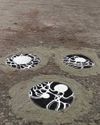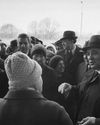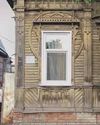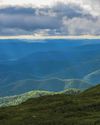ON THE OUTSKIRTS OF ST. PETERSBURG, NESTLED AMID TREES and snow, sits a church.

Near the church’s entrance a man, who looks as if he probably comes from Central Asia, is begging for money. A parishioner casts an unfriendly glance his way before entering the church, where she hurriedly approaches some women who work there.
“This is outrageous! How can there be a Muslim begging at the entrance to an Orthodox church? This simply won’t do, especially here, at Kulich and Paskha!” she exclaims, using the affectionate nickname people have given this eighteenth-century church.
Post-secular Russian reality is fraught with paradoxes, the by-products of a tangled web of pagan mysticism, Soviet materialism, Christian ethics, reverence for the punitive power of the law, and other highly incompatible credos. The same people who seek the savior’s mercy and forgiveness for their own sins use Russia’s law against “offending religious sensibilities” as a weapon against anyone they don’t like. Meanwhile, the Communist Party leader publicly attends church, and Easter sometimes coincides with Space Day.
St. Petersburg’s Church of the Blessed Trinity, with its pyramidal belfry, somehow fits nicely into this contradiction-ridden landscape. The church’s nickname – Kulich and Paskha – was inspired by the shape of its belfry and classical rotunda. The belfry’s pyramidal form is reminiscent of a paskha, a rich, conical cheesecake, while the rotunda is more or less the shape of a kulich, a tall round loaf, usually topped with icing and eaten with paskha. Both paskha and kulich are central to the celebratory breaking of the pre-Easter fast – the Great Lent. This tradition was preserved within many families even throughout the years of the officially atheist Soviet state.
Esta historia es de la edición March/April 2017 de Russian Life.
Comience su prueba gratuita de Magzter GOLD de 7 días para acceder a miles de historias premium seleccionadas y a más de 9,000 revistas y periódicos.
Ya eres suscriptor ? Conectar
Esta historia es de la edición March/April 2017 de Russian Life.
Comience su prueba gratuita de Magzter GOLD de 7 días para acceder a miles de historias premium seleccionadas y a más de 9,000 revistas y periódicos.
Ya eres suscriptor? Conectar

Sidewalk Art
The lamentable state of Russia’s roads and sidewalks has long been fertile ground for memes and jokes. Irkutsk artist Ivan Kravchenko decided to turn the problem into an art project. For over two years he has been patching ruts in city sidewalks with colorful ceramic tiles.

Sputnik V: First Place or Long Shot?
The Russian vaccine seems top-notch, but low public trust and a botched rollout remain formidable barriers to returning to normalcy.
the Valley of the Dead
On the Trail of a Russian Movie Star

Food & Drink
Food & Drink
POLAR YOUTH
Misha Smirnov has the day off. There are the traditional eggs for breakfast and the usual darkness out the window.

Russian Chronicles
Russian Chronicles
A People on the Brink
Over the past century, the ancient people known as the Votes has been exiled twice, has seen its language banned, and has faced the threat of having its villages razed. Today, although teetering on the verge of extinction, it holds fast to one of the last rights it enjoys – the right to bear and to say its own name.

Tenders of the Vine
Visiting Russia’s Nascent Wine Region

Restoring the Future
A Small Town Gets a Makeover

Ascending Anik
Here I stand, on the summit of Anik Mountain, drenched to the bone amid zero visibility, driving rain, and a fierce wind.